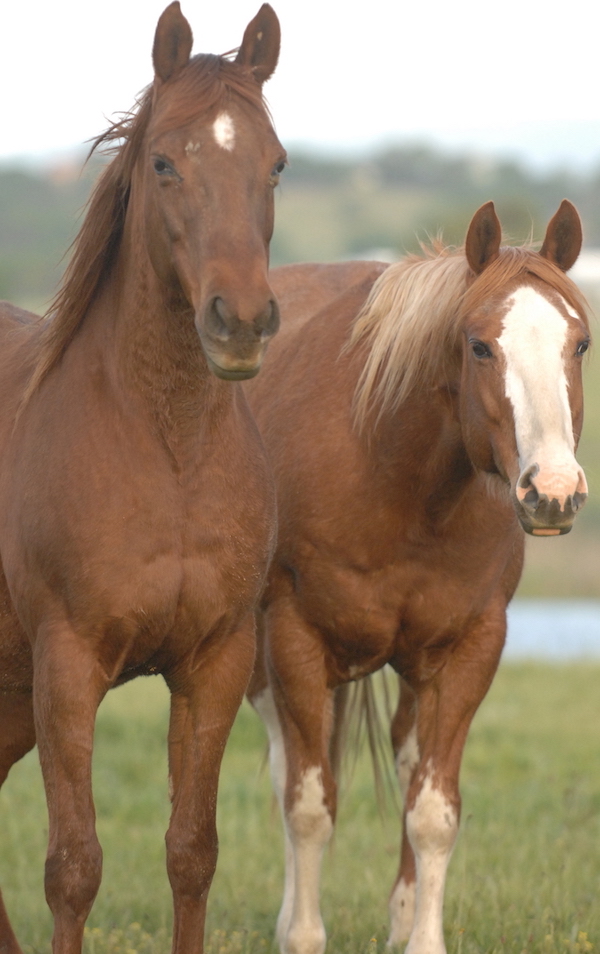
We know horses can tell us things with their facial expressions. But other parts of your horse’s body can “speak,” as well.
For example, a head held high or bobbed up and down–as illustrated by the horses in the photo–signifies intense interest. In such instances, the horse is attempting to focus his eyes on something that’s caught his attention. British zoologist Desmond Morris describes this and other equine body language in his classic book Horsewatching.
Morris explains that the maneuver known as a body check is used by a dominant horse to block the movement of a subordinate herd member.
“It’s a form of threat, saying, ‘I’m in charge,’” explains the author.
This is, of course, why it’s so important for us to establish that we are in control of our horse’s movement, and not vice versa. This applies whenever we’re leading or longeing him. By standing our ground and making him move, instead, we’re signaling in language he understands that we’re in charge.
Horses speak with their legs, too. Pawing the ground, for example, can express a strong desire to move forward, which is why we often see it in horses that are tied. Horses at liberty may paw, too. Sometimes it’s a food-seeking gesture, but it can also signal mixed feelings, as Morris describes.
“If something prevents horses from advancing—either a fear of doing so or a physical obstruction—then they may start to paw at the ground as a way of expressing their thwarted feelings.”
The front-leg lift, meanwhile, is typically a threat, as it simulates the strike horses use when they engage one another in combat. The lift is, writes Morris, “a way of saying, ‘This is what I will do to you if you provoke me further.’” Or, in other words, the equine equivalent of a human fist shake–definitely not something to take lightly!
Horses “talk” with their tails, too. Swished directly up and down, a tail registers excitement. Held high, it indicates “alertness, activity and exuberance,” writes Morris. “A boisterous young horse, for example, may approach another and show its readiness for play by flicking its tail high up over its back…a signal immediately understood by another young horse and a game quickly begins.”
On the other hand, a tail tucked tightly against the rump expresses trepidation, as when a horse encounters a more dominant animal he’s fearful of. Morris says this is similar to what a dog does in trying to put its tail between its legs.
A rapid swishing of the tail in various directions may indicate anxiety, frustration, or confusion.
“The ‘fly’ at which its tail is swishing has become symbolic,” Morris explains. “The source of the annoyance is now psychological rather than physical.”
And that’s something to keep in mind when we’re trying to train a new maneuver! Because if the horse is confused or frustrated, it’s our fault, not his.




